Finish vs Rough Boring
Published by Kortney on May 1st 2023
Finish Boring vs. Rough Boring - What's the Difference?
In the metalworking industry, boring is a process of enlarging an existing hole or creating a new hole with greater accuracy, precision, and surface finish. Boring is a fundamental machining process that is used to produce cylindrical holes in various workpieces. However, boring is not a one-size-fits-all process; there are two different types of boring, namely finish boring and rough boring, each with unique characteristics and purposes.
Finish Boring
Finish boring is a machining process that involves enlarging a pre-existing hole to achieve a precise diameter, straightness, roundness, and surface finish. The purpose of finish boring is to produce a high-quality hole that meets tight tolerances, fits perfectly with the mating parts, and ensures accurate alignment of the final assembly. Finish boring typically uses specialized tools such as single-point boring bars or boring heads equipped with carbide inserts or diamond-coated tools that can provide a high degree of precision and surface finish.
The finish boring process is used for producing final dimensions of a workpiece with a high degree of accuracy and precision, typically with a tolerance of less than 0.01 mm. Finish boring can be performed on a lathe, milling machine, or specialized boring machine, depending on the specific requirements of the workpiece. Finish boring is typically a slower process than rough boring, as it requires multiple passes to achieve the desired level of accuracy and surface finish.
Rough Boring
Rough boring is a machining process that involves removing a large amount of material from an existing hole to achieve a predetermined size, allowing for subsequent finishing operations. The purpose of rough boring is to remove excess material from the workpiece and to provide a starting point for the finish boring process. Rough boring typically uses larger and more robust tools than finish boring, such as multi-point boring bars, indexable insert boring tools, or adjustable boring heads that can remove material quickly and efficiently.
The rough boring process is used for producing holes with a diameter larger than the finished size, typically with a tolerance of +/- 0.1 to 0.5 mm. Rough boring is commonly used for preparing workpieces for finish boring or other secondary machining operations, such as threading, counterboring, or reaming. Rough boring is typically a faster process than finish boring, as it removes more material in a single pass and can be performed at higher cutting speeds.
In conclusion, finish boring and rough boring are two distinct machining processes that serve different purposes in the metalworking industry. Finish boring is used to achieve high accuracy, precision, and surface finish of a pre-existing hole, while rough boring is used to remove excess material and prepare a workpiece for subsequent machining operations. Understanding the differences between these two processes is essential for selecting the appropriate tooling, machine, and cutting parameters to achieve optimal results.
Shop our selection of finish boring heads by clicking here.
Shop our selection of rough boring heads by clicking here.
Shop our selection of Kaiser Boring heads and bars by clicking here.

